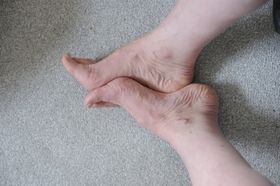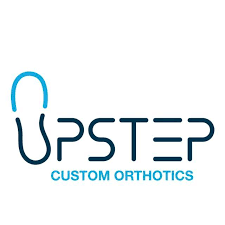Do Heel Cups Help Achilles Tendonitis
Learn about the symptoms of Achilles tendonitis, footwear attachments called heel cups, and using heel cups to help treat Achilles tendonitis.
Updated March 24, 2023.
Achilles tendonitis is the inflammation of the Achilles tendon, the band of tissue that connects the calf muscles in the lower limb to your heel bone. It occurs when you overload the tendon and can hinder the performance of daily activities.
Symptoms of Achilles Tendonitis
The common symptoms that you're likely to experience if you have Achilles tendonitis are:
- Pain, tenderness, swelling, and warmth around the heel
- Reduction in range of motion when flexing the foot
- Thickening of the tendon
» Purchase the best insoles for achilles tendonitis
What Are Heel Cups?
Similar to custom orthotics, heel lifts for Achilles pain reduce the amount of load passing through your Achilles tendon. As such, orthotic devices are a good way to manage the symptoms of Achilles tendonitis while working through the rehabilitation period. They’re often used in combination with non-steroidal anti-inflammatory drugs (NSAIDs) and exercises (stretching and strengthening).
Heel cups benefit Achilles tendonitis by elevating the hindfoot and taking tension off the Achilles tendon. Consequently, the muscle is shortened and needs only to stretch a little when walking or running. A firm heel cup will provide adequate support to your heel, reduce the tension in your Achilles tendon, and allow you to return to your normal activities while healing continues.
» Read more about how orthotic insoles can help treat Achilles tendonitis
Using Heel Cups for Your Achilles Tendonitis
While there may be no evidence that heel cups lead to permanent change, there are enough suggestions to conclude that it helps, to some degree, with tendonitis. As such, heel cups are worth a trial in managing Achilles tendonitis.
Soft tissue injuries can take weeks to heal. Thus, for the effect of the heel to be observable, it may be necessary to use the heel cup for 6-12 weeks before discarding it as non-effective. If, however, there is no improvement after that, it’s time to seek an expert opinion from your doctor.
Related Articles

Things to Avoid With Plantar Fasciitis
Babafemi Adebajo
December 18, 2024

Common Causes of Burning Heels
Babafemi Adebajo
December 17, 2024

12 Ankle Strengthening Exercises to Prevent and Avoid Further Injury
Janik Sundstrom
March 7, 2025

Can Arch Support Treat Bunions?
Janik Sundstrom
February 1, 2024

Best Inserts for Basketball Shoes to Prevent Pronation
Janik Sundstrom
May 14, 2025
Related Posts
Dr. Pooja Gajare
Can Orthotic Insoles Help Treat Achilles Tendonitis?
Babafemi Adebajo
Best Exercises for Your Achilles Tendon
Babafemi Adebajo
Achilles Tendonitis: Symptoms, Causes, Treatments, and More
Babafemi Adebajo
Best Exercises for Posterior Tibial Tendonitis
Staff Writer
Benefits of Orthotics for Basketball Players
Babafemi Adebajo
Orthotics for Helping With Back Pain
Upstep Staff




